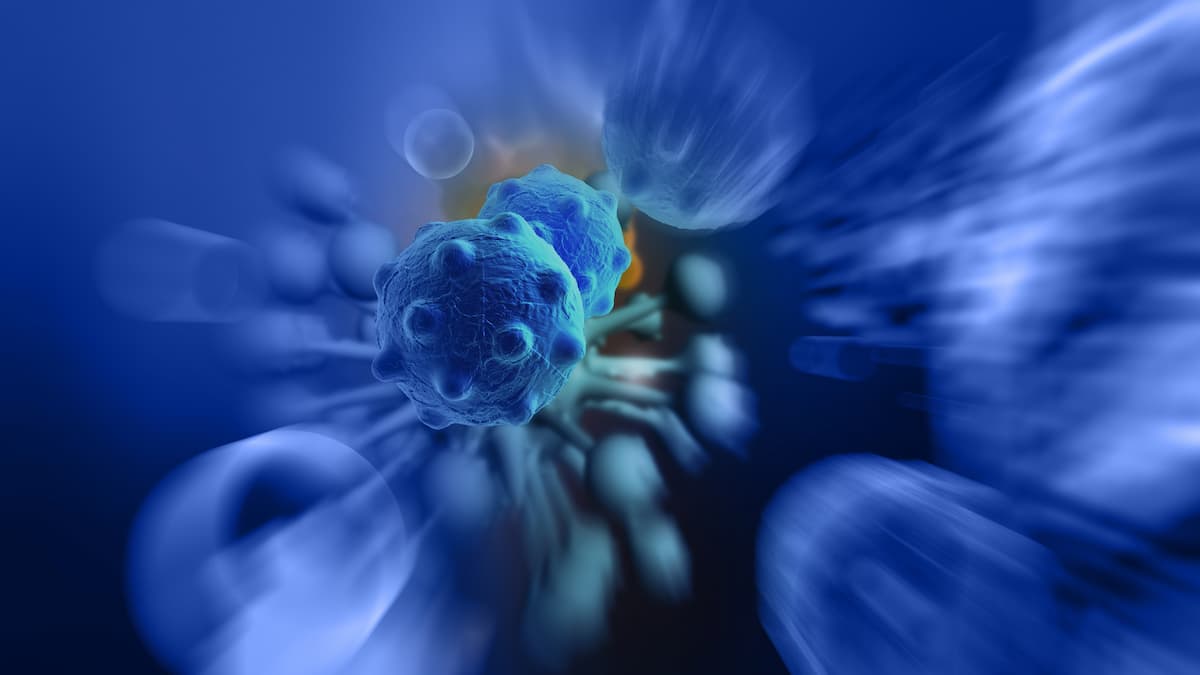EMA Accepts Application for Belantamab Mafodotin in R/R Multiple Myeloma
Data from DREAMM-7 and DREAMM-8 support the marketing authorization application for the belantamab mafodotin combinations in multiple myeloma.
The application is now under formal review from the Committee for Medicinal Products for Human Use, which will determine whether the belantamab mafodotin combinations are suitable for authorization in the European Union.

The European Medicines Agency (EMA) has accepted a marketing authorization application for belantamab mafodotin-blmf (Blenrep) plus bortezomib (Velcade) and dexamethasone (BVd) or pomalidomide (Pomalyst) and dexamethasone (BPd) for patients with relapsed/refractory multiple myeloma, according to a press release from the developer, GSK.1
The application is now under formal review from the Committee for Medicinal Products for Human Use, which will determine whether the belantamab mafodotin combinations are suitable for authorization in the European Union.
Supporting data for the application came from interim results of the phase 3 DREAMM-7 trial (NCT04246047) and phase 3 DREAMM-8 trial (NCT04484623), in which regimens containing belantamab mafodotin produced statistically significant and clinically meaningful improvements in progression-free survival (PFS) vs standard-of-care therapies in relapsed/refractory multiple myeloma.
“Today’s milestone reinforces the potential for [belantamab mafodotin] to redefine outcomes for patients with multiple myeloma at or after first relapse,” Hesham Abdullah, senior vice president, and global head of Oncology, Research & Development, at GSK, said in the press release.1 “We are working to bring [belantamab mafodotin] to patients as quickly as possible given the high unmet need and the clinically robust effects of the [belantamab mafodotin] combinations in the DREAMM-7 and DREAMM-8 phase 3 head-to-head trials.”
DREAMM-7
According to data published in The New England Journal of Medicine, the median PFS was 36.6 months (95% CI, 28.4-not reached [NR]) with BVd compared with 13.4 months (95% CI, 11.1-17.5) in patients who received daratumumab (Darzalex) plus bortezomib and dexamethasone (DVd; HR, 0.41; 95% CI, 0.31-0.53; P <.001).2 At 18 months, the overall survival (OS) rate was 84% vs 73% in each respective arm; follow-up for this end point remains ongoing. Additionally, responses occurred in 83% (95% CI, 77%-87%) of the BVd arm vs 71% (95% CI, 65%-77%) of the DVd arm.
Data showed grade 3 or higher adverse effects (AEs) in 95% and 78% of the BVd and DVd arm, respectively. Common high-grade toxicities in each arm included blood and lymphatic system disorders (62% vs 44%), infections and infestations (31% vs 20%), and ocular events (34% vs 3%).
In the open-label, international, DREAMM-7 trial, patients were randomly assigned 1:1 to receive belantamab mafodotin intravenously at 2.5 mg/kg on day 1 of each 21-day cycle or daratumumab intravenously at 16 mg/kg each week in cycles 1 to 3 followed by every 3 weeks in cycles 4 to 8 and every 4 weeks in cycle 9 and beyond in combination with bortezomib and dexamethasone.
The trial’s primary end point was PFS. Secondary end points included OS, response duration, and minimal residual disease (MRD) negativity.
DREAMM-8
Findings published in The New England Journal of Medicine highlighted that the median PFS was NR in the BPd arm compared with 12.7 months (95% CI, 9.1-18.5) in patients who received pomalidomide plus bortezomib and dexamethasone (PVd; HR, 0.52; 95% CI, 0.37-0.73; P <.001).3 The estimated PFS rates at 12 months were 71% (95% CI, 63%-78%) vs 51% (95% CI, 42%-60%) in each respective arm. Investigators also observed responses in 77% (95% CI, 70%-84%) and 72% (95% CI, 64%-79%) of patients, respectively.
Grade 3 or higher AEs affected 94% of patients who received BPd and 76% of those who were treated with PVd. Frequent grade 3 or higher toxicity in each respective arm included neutropenia (42% vs 28%), thrombocytopenia (24% vs 20%), and pneumonia (17% vs 8%).
In the open-label, global DREAMM-8 trial, patients were randomly assigned 1:1 to receive 2.5 mg/kg of belantamab mafodotin on day 1 of cycle 1 followed by 1.9 mg/kg on day 1 of cycle 2 and onward or bortezomib at 1.3 mg/m2 in combination with pomalidomide and dexamethasone.
The primary end point was PFS. The trial’s secondary end points included OS, MRD-negative status, and response duration.
References
- Blenrep (belantamab mafodotin) combinations in multiple myeloma application accepted for review by the European Medicines Agency. News release. GSK. July 19, 2024. Accessed July 19, 2024. https://tinyurl.com/tzx6253t
- Hungria V, Robak P, Hus M, et al. Belantamab mafodotin, bortezomib, and dexamethasone for multiple myeloma. N Engl J Med. Published online June 1, 2024. doi:10.1056/NEJMoa2405090
- Dimopoulos MA, Beksac M, Pour L, et al. Belantamab mafodotin, pomalidomide, and dexamethasone in multiple myeloma. N Engl J Med. Published online June 2, 2024. doi:10.1056/NEJMoa2403407
Newsletter
Stay up to date on recent advances in the multidisciplinary approach to cancer.